Physical Address
304 North Cardinal St.
Dorchester Center, MA 02124
Physical Address
304 North Cardinal St.
Dorchester Center, MA 02124

Witness untouched wilderness on nine isolated treks that challenge conventional hiking wisdom—these remote destinations offer something mainstream trails never could.
The well-worn path represents conformity, but you’re seeking something different. While most hikers crowd popular trails, you’re drawn to places where footprints are rare and silence speaks louder than any guidebook. These nine isolated treks won’t drain your savings account, but they’ll challenge everything you think you know about hiking. From Patagonian windswept peaks to Bhutanese high-altitude passes, each destination offers something that mainstream trails simply can’t deliver.
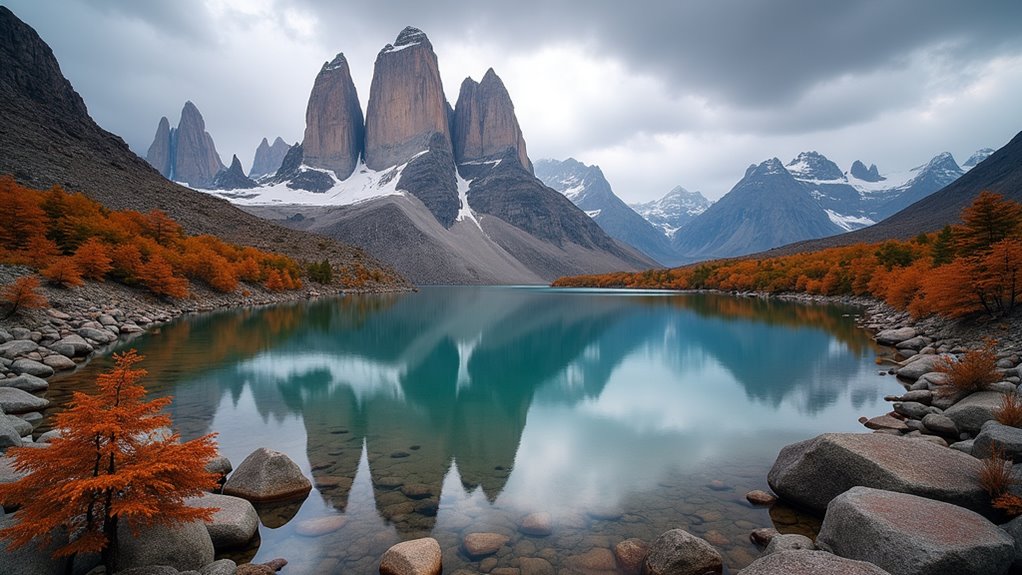
Where can you find some of the world’s most dramatic granite towers rising from windswept Patagonian steppe? Torres del Paine’s “O” Circuit delivers exactly that spectacle across eight demanding days.
Eight demanding days through Patagonia’s granite spires deliver world-class wilderness spectacle across Torres del Paine’s legendary O Circuit.
You’ll traverse 130 kilometers through Chile’s crown jewel national park, encountering turquoise lakes, ancient glaciers, and those iconic spire formations that’ll leave you speechless.
The complete circuit requires serious preparation – expect river crossings, unpredictable weather, and challenging terrain that tests your endurance.
Budget-wise, you’re looking at expensive park fees and gear rentals, but camping keeps costs manageable compared to refugio stays. Book campsites months ahead, especially for peak season. Pack layers for rapidly changing conditions and waterproof everything.
This isn’t a beginner trek, but experienced hikers will find unparalleled wilderness solitude and Instagram-worthy vistas around every windswept corner. This challenging circuit consistently ranks among the world’s best hikes for its remote location and stunning Patagonian landscapes.
From Patagonia’s granite spires, we shift to the high-altitude domain of the Himalayas, where Bhutan’s Snowman Trek claims the title of one of the world’s most challenging and remote adventures.
You’ll tackle 25 days across eleven high-altitude passes, reaching 17,100 feet while crossing some of Earth’s most isolated terrain. The trek demands serious preparation—altitude sickness affects most hikers, and weather can turn deadly within hours.
Budget around $6,000-8,000 for permits, guides, and logistics. Bhutan requires mandatory guided tours, so you can’t cut costs by going solo.
October offers the clearest skies, though you’ll face freezing temperatures.
Only attempt this if you’re an experienced high-altitude trekker. The reward? Pristine valleys, ancient glacial lakes, and complete solitude in one of Asia’s last untouched wilderness areas.
For those seeking similar icy challenges closer to home, the US offers exceptional glacier climbing opportunities on some of the continent’s most accessible yet demanding frozen formations.
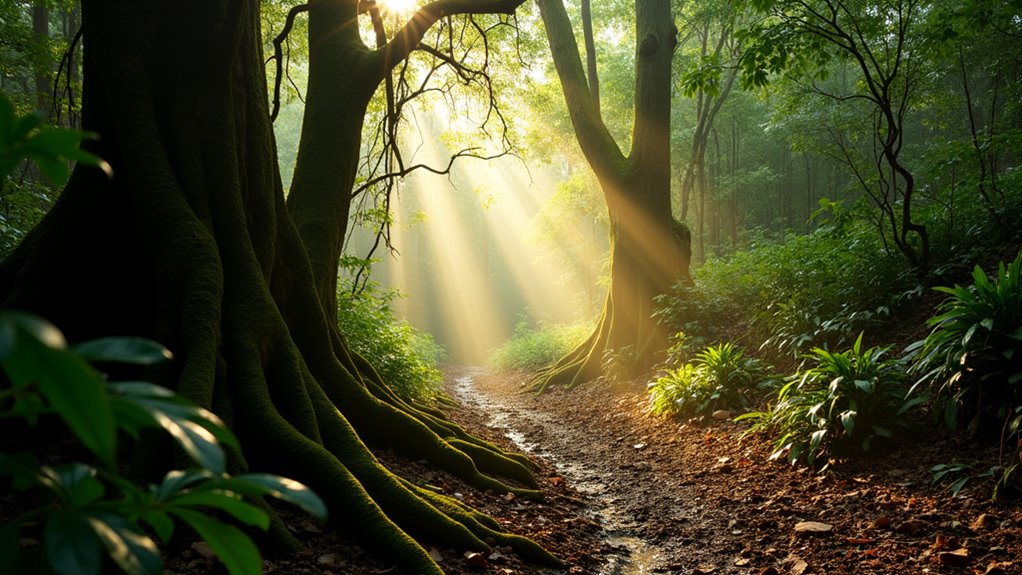
Why would you choose to follow the footsteps of World War II soldiers through Papua New Guinea’s unforgiving jungle? You’ll discover one of history’s most challenging and meaningful treks along the 96-kilometer Kokoda Track.
This isn’t your typical hiking vacation. You’ll battle steep mountain ridges, cross rushing rivers, and navigate dense rainforest while temperatures soar above 30°C. The humidity’s relentless, and leeches are your constant companions.
Budget around $2,000-4,000 for guided tours – solo trekking isn’t permitted. You’ll need excellent fitness levels and mental toughness for this 6-10 day journey.
The reward? You’ll experience profound historical connection while villages welcome you with genuine warmth. Local porters share stories passed down through generations, making this trek an unforgettable pilgrimage rather than mere adventure tourism. Unlike family camping adventures that focus on comfort and convenience, the Kokoda Track demands everything from your body and spirit.
Although Iceland’s Laugavegur Trail spans just 55 kilometers, you’ll traverse what feels like an entire planet’s worth of landscapes in four days. You’ll walk through rainbow-colored rhyolite mountains, steaming geothermal valleys, black sand deserts, and glacial rivers that’ll test your balance on rickety bridges.
The trail runs from Landmannalaugar to Thórsmörk between June and September. You’ll need to book mountain huts months ahead—they’re your only shelter option and cost around $50 per night. Pack lightweight gear since you can’t resupply along the route.
Weather changes rapidly, so bring waterproof everything. River crossings can be dangerous after heavy rain, and you’ll encounter zero cell service. Despite Iceland’s tourist crowds, you’ll find genuine solitude here among some of Earth’s most alien-looking terrain.
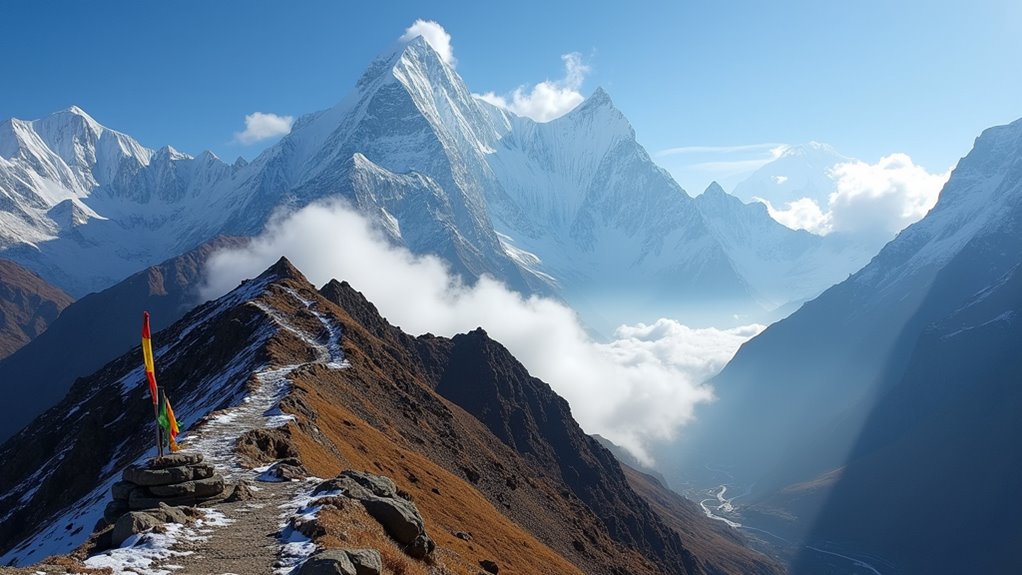
While most trekkers flock to Everest Base Camp, Nepal’s Annapurna Circuit offers equally stunning Himalayan views with far fewer crowds—especially if you tackle the challenging route over Thorong La Pass at 17,769 feet.
Experience Nepal’s best-kept secret: the Annapurna Circuit delivers breathtaking Himalayan vistas without Everest’s overwhelming crowds and tourist circus.
You’ll spend 15-20 days circling the Annapurna massif, crossing diverse landscapes from subtropical forests to alpine deserts.
The pass itself is brutal—you’ll start your summit push at 3 AM to avoid afternoon winds.
Budget around $30-40 daily for teahouse accommodation and meals.
Skip the expensive guided tours. The trail’s well-marked, and you’ll meet fellow trekkers for company.
October-November offers clear skies, while March-May brings rhododendron blooms.
Pack warm layers—temperatures plummet at altitude.
You’ll earn those mountain panoramas through sweat and determination.
Consider using share economy platforms to connect with other trekkers for equipment sharing or finding camping companions to reduce costs along the circuit.
If you’re craving Alpine solitude without the Tour du Mont Blanc crowds, the Haute Route delivers Europe’s most spectacular high-altitude traverse. This classic 11-day trek connects Chamonix and Zermatt through remote glacial valleys and towering 4,000-meter peaks.
You’ll encounter genuine isolation between mountain huts, especially on the challenging Pigne d’Arolla and Vignettes sections. The route demands solid mountaineering skills and proper glacier equipment.
Budget-smart planning tips:
Weather windows are essential—typically July through September. You’ll need crampons, rope, and avalanche gear for glacier crossings.
This isn’t beginner terrain, but rewards experienced trekkers with unmatched Alpine grandeur.
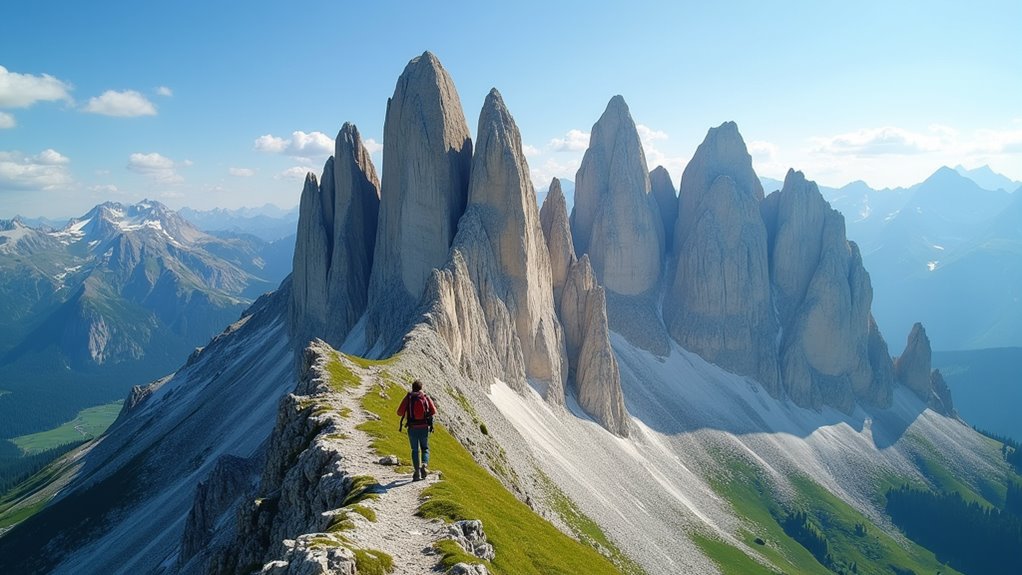
When crowds descend on the Dolomites’ most famous peaks, Alta Via 1 offers a quieter alternative through Italy’s most dramatic limestone towers. You’ll trek 75 miles from Braies to Belluno, crossing high passes and skirting massive rock walls that glow pink at sunrise.
The route connects mountain huts where you’ll sleep in dormitory-style beds for €30-50 nightly, including dinner. Book ahead during peak season. You’ll need sturdy boots and layers—weather changes quickly at altitude.
Start from Lago di Braies, easily reached by bus from Bruneck. The trail demands moderate fitness but rewards you with views of Tre Cime, Marmolada, and countless spires.
Skip crowded cable cars and tourist villages. Here, you’ll find solitude among some of Europe’s most spectacular mountain scenery. If you’re bringing gear for winter sports, ensure proper snowboard maintenance before your mountain adventure to keep equipment in peak condition.
From Europe’s limestone spires, we head to America’s tallest peak outside Alaska. Mount Whitney’s 22-mile round-trip trail challenges you with 6,100 feet of elevation gain, but the solitude above treeline makes every step worthwhile. You’ll find fewer crowds than popular national parks, especially on weekdays.
The trail demands preparation but won’t break your budget:
Starting at Whitney Portal, you’ll switchback through alpine lakes and granite walls before reaching the 14,505-foot summit. Pack layers—temperatures drop dramatically with altitude. The trail’s isolation increases beyond Lone Pine Lake, where you’ll truly escape civilization.
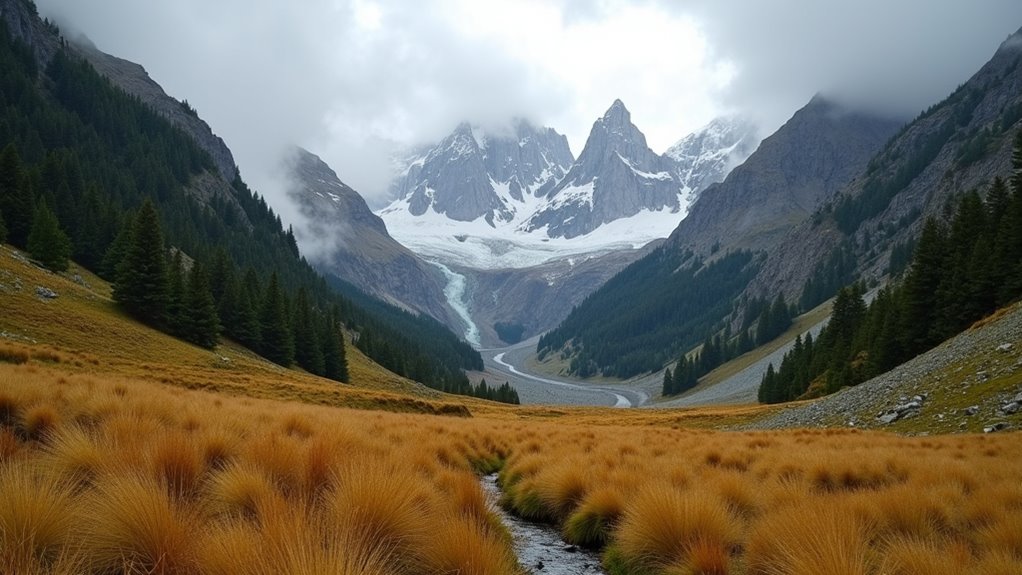
Why settle for ordinary mountain views when New Zealand’s Routeburn Track delivers some of the world’s most dramatic alpine scenery? This 32-kilometer Great Walk connects Fiordland and Mount Aspiring National Parks, offering you pristine wilderness without the crowds of Milford Track.
You’ll traverse beech forests, alpine meadows, and razor-sharp ridgelines while spotting native birds like kea parrots. The track’s isolation means you won’t find cell service or convenience stores – pack everything you need.
Complete wilderness immersion awaits as you disconnect from modern life and reconnect with New Zealand’s untamed alpine beauty.
Budget around $50-70 NZD per night for hut accommodation, or camp for $15 NZD.
October through April offers the best weather, but book early since hut spaces fill quickly. The moderate difficulty suits most fitness levels, though weather can change rapidly in these mountains.
In the humid conditions of New Zealand’s wilderness, proper mildew control on your camping gear becomes essential to prevent equipment damage and health issues.
You’ll find that only 12% of Earth’s land remains truly wild and untouched—making these isolated treks incredibly precious. Whether you’re budgeting for Nepal’s affordable teahouses or saving up for Bhutan’s daily fees, these remote trails offer experiences you can’t put a price on. Pack light, plan ahead, and don’t forget that some of the world’s most stunning wilderness is still out there waiting for your footprints.